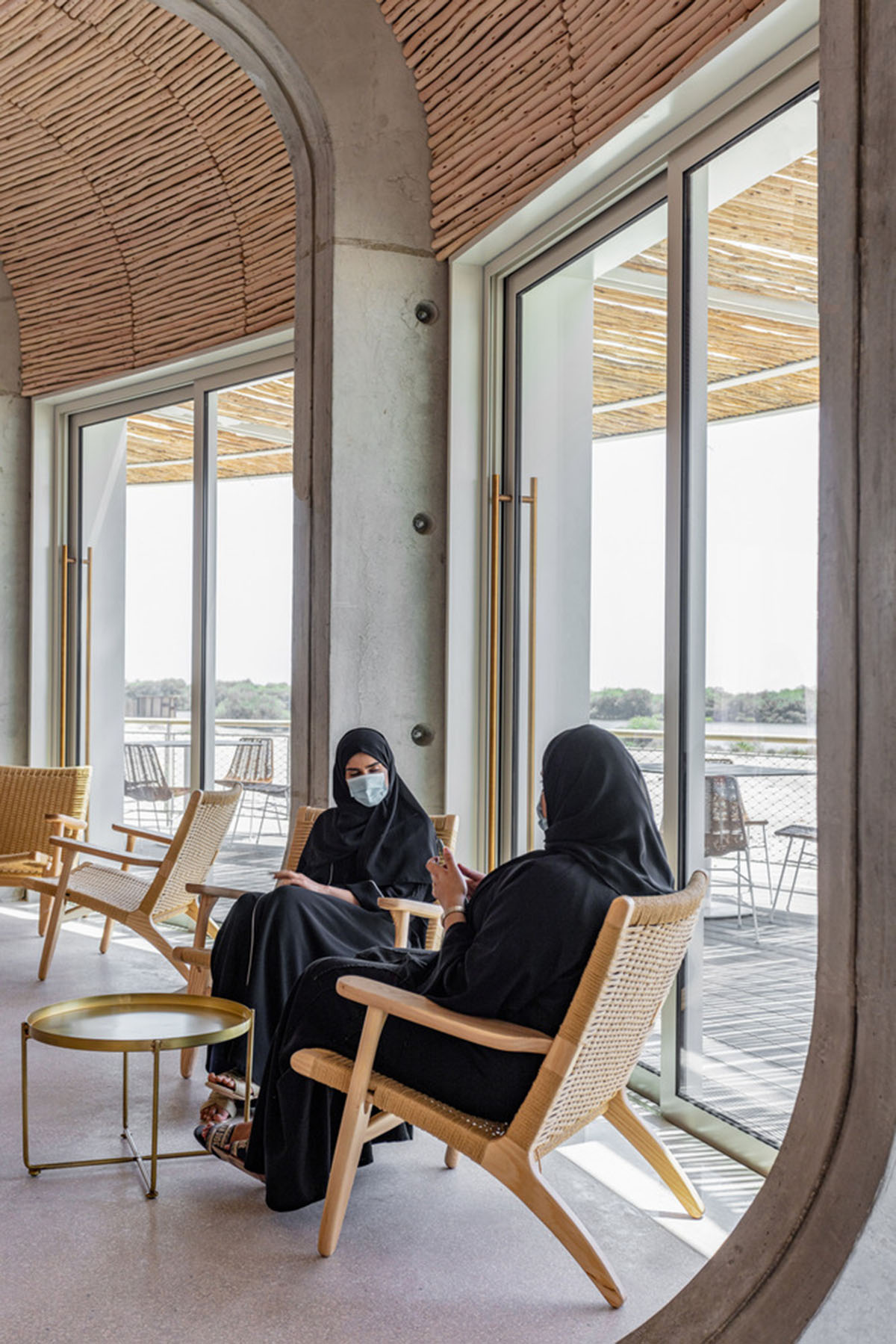Submitted by WA Contents
Hopkins Architects created seven interconnected pods for Turtle Sanctuary in Sharjah
United Arab Emirates Architecture News - May 14, 2021 - 11:55 11899 views

London and Dubai-based architecture studio Hopkins Architects has created seven interconnected pods for the Khor Kalba Turtle and Wildlife Sanctuary in Sharjah, United Arab Emirates.
Named Khor Kalba Turtle and Wildlife Sanctuary, the complex, situated on one of the most sensitive and biodiverse nature reserves in the Gulf, Kalba Mangrove Reserve, is composed of a group of rounded buildings that offer a sanctuary for rehabilitating turtles and nurturing endangered birds, connecting with local initiatives and expertise.

The project was commissioned by Sharjah’s Environmental Protected Areas Authority (EPAA) to provide education and visitor facilities, while increasing environmental awareness and engagement with conservation programmes.

"It will revive the environmental significance of the critical work being undertaken by the EPAA and will serve as an operational base for research and the monitoring of the protected Kalba reserve’s natural resources, as well as those of the wider east coast area of the United Arab Emirates and Oman," said Hopkins Architects.
In order to avoid disturbing the natural land, the architects designed seven interconnected, modular pods and tensile structures that create a visitor centre, with a terrace and panoramic views towards the mangrove forests and distant mountains.

The building's facilities include aquaria, exhibition areas, visitor amenities, staff offices, veterinary facilities, classrooms, gift shops, and a café.
"A carefully set out nature trail encourages visitors to explore the reserve’s rich biodiversity of indigenous mangrove forests and mudflats and the species it supports including turtles, stingrays, gazelles and the rare Arabian Collard Kingfisher," added the studio.

The geometry of the pods, which are very precise, was inspired by urchin exoskeletons and it purposefully echoes those of the Buhais Geology Museum, with which the Sanctuary is paired.

For construction, the architects paid attention to the natural geography and site conditions, so the pods have been designed as pre-fabricated concrete structures to minimise disruption to the existing land, they have concrete foundations which are simple robust discs, elevated to protect them on this tidal location.

"The modular buildings invite the landscape into the spaces, using framed panoramic views out and rays of natural light from above," the team added.
"The pods are clad with segments of white scalloped pre-cast concrete referencing the shells found on the local shoreline and creating subtle variations of light and texture."
The building's detailed exoskeleton is wrapped by an array of steel ribs that accentuate the sculptural cantilevered forms and complete this robust cladding system. These details are designed to withstand the site’s unforgiving coastal conditions, as the architects explained.

Inside, visitors are welcomed with a dramatic, semi-enclosed ribbed pod which serves as an orientation space and features glazed openings orientated towards key views.
The architects used a palette of light coastal tones to soften the interior which is illuminated by skylight ocuili.

The team applied passive design principles throughout construction, to protect the interior spaces from the desert heat and lower the overall operational energy required.
"The pods‘ precast concrete shells, ribs, and in-situ foundation discs provide a well-sealed, exposed thermal mass across their floors, walls, and roofs," according to the team.
"A waterproof membrane and insulation running within the cladding cavity is continuous across the pods surface."







Site plan

Roof plan

Floor plan

Section

Section

Elevation

Elevation

Cafe section detail

Diagram

Diagram
Hopkins Architects was founded in 1976 by Michael Hopkins and Patty Hopkins. Hopkins Architects is one fo the UK's leading firms. The Practice is led by five Principals.
Hopkins Architects previously completed steel pods for Interpretive Centre in Sharjah. The Richard A. and Susan F. Smith Campus Center at Harvard University is one of the key projects of the firm.
Project facts
Project name: Khor Kalba Turtle and Wildlife Sanctuary
Architects: Hopkins Architects
Location: Sharjah, United Arab Emirates.
Date: 2021
All images © Marc Goodwin, Archospheres
All drawings © Hopkins Architects
> via Hopkins Architects
